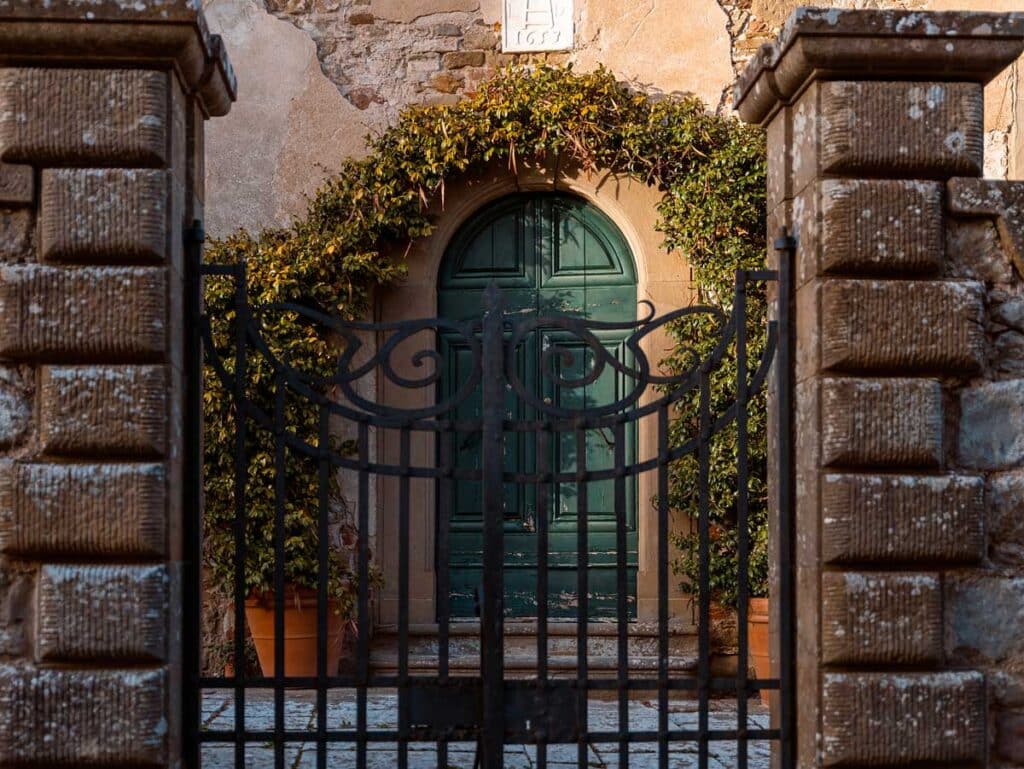THE CASTLE VILLAGE
Historic residence in Tuscany
ABOUT US
Small Tuscan village
GARGONZA, located in the heart of Tuscan hills, is a thirteen-century fortified medieval village reminescent of the toy forts that children enjoy building on the floor, spending hours moving around the tower or the well, enclosing houses inside a thick wall which no enemy can break through…
From Psychanalyse de la maison- Olivier Marc
History
From the thirteen century

1150
The earliest records of Gargonza as a fortified village of the Val di Chiana date back to a 1150: a quotation that mentioned a fortified castle along the road from Arezzo to Siena: which is the same castle where Dante spent as his exile. Sought after by Guelfi and Ghibellini, during the XV century the Castle of Gargonza was known as the village which dedicated itself to cultivating the woods as well as wool production.
XVII sec.
During the XVII century, the Castle became an organized 900 hectare share cropping farm with thirty-three farms and homes for farmers and their families. The village already had, besides guestrooms, a parish, a house of canons, a school, an oil mill, stables, and four bread ovens (still functioning).
1970
After two hundred prosperous years, during the first half of the Twentieth century, the Castle was abandoned by a community who left for a better life in the city. Around 1970, Roberto Guicciardini Corsi Salviati, began the restoration process with the aim to save a village trying to preserve it’s original architecture and bring back it’s community. No longer a community of farmers but a community of travellers!
Gargonza’s houses
Apartments and rooms
No wonder Gargonza’s houses and apartments bear the names of its former inhabitants: Argentina, Boccio, Niccolina and those of many other special characters. Their truthful existence lives on their ancient dwellings. Enclosed inside the medieval wall, the carefully restored houses have retained the simplicity of rural life. If you experience steep wooden staircases or rooms excavated in the rock, blackened fireplaces or tiny windows looking out on the woods, remember this is our history’s added value. Today, Gargonza is directly managed by Neri Guicciardini and his wife Elisa (foto). With the same passion of their parents, Elisa and Neri together with all the staff at Gargonza, will do their best to make your experience at Gargonza a superb holiday in our historic tuscany accommodation.
Gargonza’s houses
Apartments and rooms
No wonder Gargonza’s houses and apartments bear the names of its former inhabitants: Argentina, Boccio, Niccolina and those of many other special characters. Their truthful existence lives on their ancient dwellings. Enclosed inside the medieval wall, the carefully restored houses have retained the simplicity of rural life. If you experience steep wooden staircases or rooms excavated in the rock, blackened fireplaces or tiny windows looking out on the woods, remember this is our history’s added value. Today, Gargonza is directly managed by Neri Guicciardini and his wife Elisa (foto). With the same passion of their parents, Elisa and Neri together with all the staff at Gargonza, will do their best to make your experience at Gargonza a superb holiday in our historic tuscany accommodation.